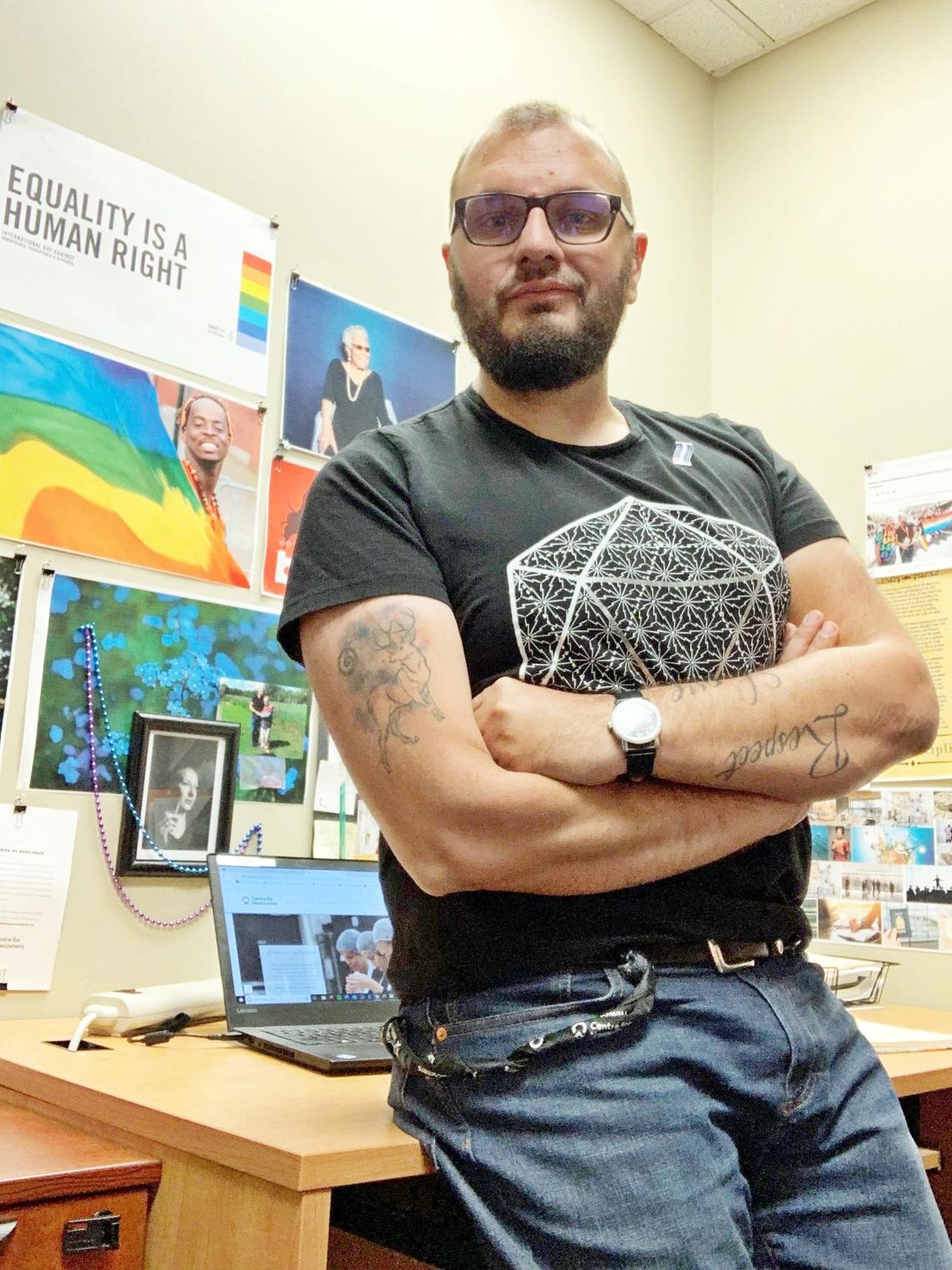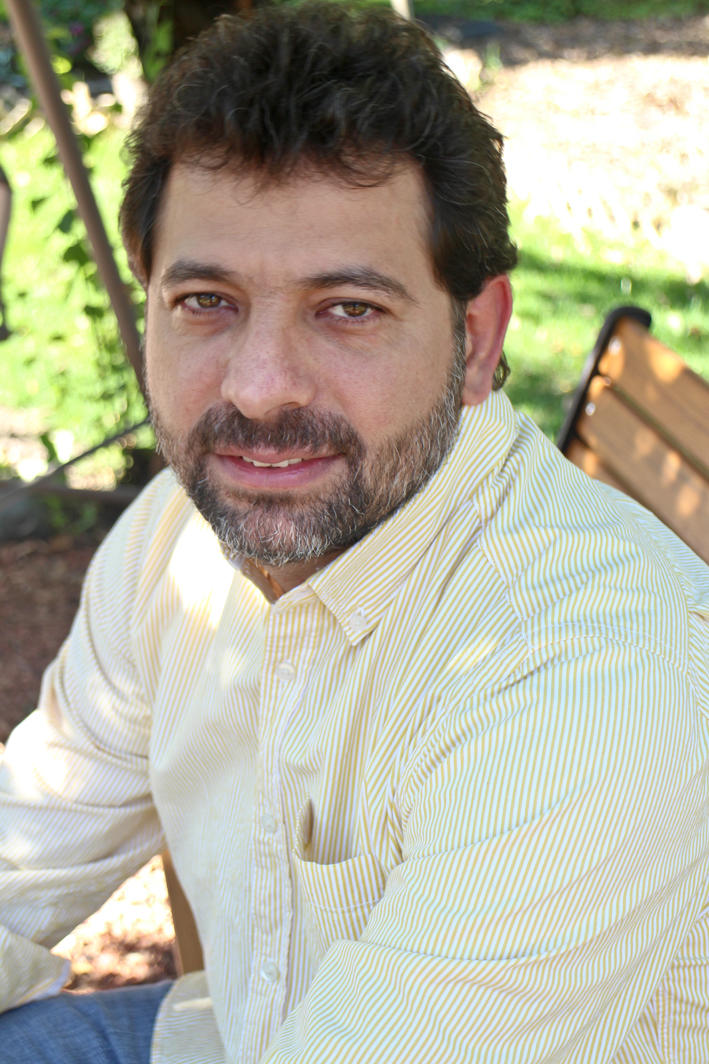Aug. 23, 2019
Why LGBTQ2S+ refugees have a long and lonely road to resettlement in Canada
It’s been many years now, but Boban Stojanovic still prefers to work through his lunch break, so he can leave for work later and miss the 8 a.m. rush hour on the train.
“I always try to avoid that crowd in the morning,” says Stojanovic, who supports refugees in his counselling role at the Centre for Newcomers. “I had bad experiences back home on the buses. You know, sometimes people would spit on me or be verbally aggressive. So, I would find myself wondering why I wasn’t ready to leave my apartment at 8 a.m. Why 8:30 or 8:45? Deep in my mind it’s because I just wanted to avoid that like crowd in the morning, so that trauma is somewhere there.”
Stojanovic’s lived experience makes him a great support for the clients he works with, especially those who, like himself, identify as LGBTQ2S+. Being gay, lesbian or trans adds a layer of difficulty, stress and trauma to resettlement in a new country — perhaps one of the most stressful things a person can go through.

Boban Stojanovic supports refugees in his counselling role at the Centre for Newcomers.
Courtesy Boban Stojanovic
Besides learning a new language, culture and trying to make a life, Stojanovic says that LGBTQ2S+ individuals are often more isolated because they usually don’t seek out their expat community or socialize at community functions, churches or mosques because of homophobia, transphobia and other forms of exclusion. It can make for a lonely existence.
“For example,” says Stojanovic, “a group of refugees with a shared war experience might meet and talk and go through the collective trauma they experienced as a big group. They will say, ‘We are innocent, but we are victims.’ LGBTQ+ refugees feel responsibility and guilt for everything that’s happened in their lives.
“In their case it’s not only about ‘look what they did to me,’ it’s also about ‘look what being who I am did to my life.’ It's more like individual trauma they experienced. So the healing process goes very, very slowly and most of us have to deal with that on our own. Not necessarily because there’s a gap in the system or something. It’s simply part of social dynamic, not like something that we can understand as a group of people.”
This distinction between individual trauma versus some kind of shared, or collective trauma, is something Dr. Yahya El-Lahib, PhD, University of Calgary Faculty of Social Work professor, understands well. The idea is at the heart of an ongoing SSHRC-funded study of refugees from war-torn countries called “The Journey Home: The Refugee Settlement Project.” The multi-province project is a collaboration with Dr. Henry Parada from Ryerson University, and Dr. Roxane Carron and Dr. Marie Lacroix from University de Montréal.
As El-Lahib explains it, in the west we tend to view refugees as homogenous social group. They are over-generalized as “refugees” with little thought given to distinctions including ethnicity, language, background, country of origin, sexuality, disability, gender, etc.
“With this dominant lens, they are not,” he says, “unique individuals with specific experiences, realities, and needs.”
Our western, colonial perspective tends to frame media and public discourses about refugees by constructing them in dichotomous ways either as “heroes” who overcome terrible tragedy – or “victims” who need to be saved.

Yahya El-Lahib is researching how to best help marginalized refugees to Canada.
Courtesy Yahya El-Lahib
“The reality,” says El-Lahib, “is that most people are really somewhere in the middle of those two extremes.”
The significance of this research focusing on refugee’s experience, is to better understand the individual supports or services that refugees actually need and use. As he puts it, to go “beyond the over-generalization” of refugees to understand the complex needs of individuals. This might also help to understand individual’s actual and potential contributions to their host country, which also gets minimized or lost in the generalization.
In the case of LGBTQ2S+ refugees, El-Lahib says there is an “extra layer” of complexity. For example, he points out that in a war zone, individuals with marginalized identities — LGBTQ2S+ identifying, women with disabilities, etc. — are often targeted and subject to sexual or physical abuse and assault.
In addition, many LGBTQ2S+ refugees come from countries where same sex relationships are illegal and punishable by imprisonment or even death. In this light, LGBTQ2S+ refugees are quite different from other refugees, even if they come from the same country. El-Lahib worries that these individuals are particularly vulnerable with the rise of far-right and conservative governments in many parts of the world, increasing their risk of deportation.
Given this, El-Lahib hopes his research will create more dialogue around what refugees with marginalized identities actually need to thrive when they re-settle in Canada. Their needs should shape programs and funding priorities across the country.
Organizations like Calgary’s Centre for Newcomers, where Boban Stojanovic works, are already doing that — taking on that “extra layer of complexity,” addressing people’s individual needs with spectacular results. Stojanovic says the average success rate for refugee claims accepted by Canadian immigration is about 57 per cent. In comparison, the CFN has an incredible 92 per cent success rate.
While he says that Canada is obviously not perfect, and that discrimination, homophobia and transphobia exist everywhere, he says that for most LGBTQ2S+ refugees — himself included — it’s often much, much better. As a result, one of the hardest things for LGBTQ2S+ newcomers is often to be able to relax and live their lives without looking over their shoulders; to overcome that individual trauma that so many LGBTQ2S+ refugees have gone through.
“I also have to somehow train myself and my brain to live without that everyday trauma,” says Stojanovic. “Back home in eastern Europe and I was an LGBTQ+ activist and I was really exposed. So, if I just was on the street, I always felt the pressure: Is somebody's watching me? Does somebody want to attack me? Now I have to learn how to live without that pressure. I have to deal with my freedom. But that trauma is something that follows me and all of us I think, all our lives.”




